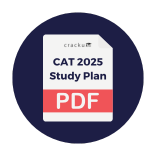The passage below is accompanied by a set of questions. Choose the best answer to each question.
Comprehension:
Critical theory of technology is a political theory of modernity with a normative dimension. It belongs to a tradition extending from Marx to Foucault and Habermas according to which advances in the formal claims of human rights take center stage while in the background centralization of ever more powerful public institutions and private organizations imposes an authoritarian social order.
Marx attributed this trajectory to the capitalist rationalization of production. Today it marks many institutions besides the factory and every modern political system, including so-called socialist systems. This trajectory arose from the problems of command over a disempowered and deskilled labor force; but everywhere [that] masses are organized - whether it be Foucault’s prisons or Habermas’s public sphere - the same pattern prevails. Technological design and development is shaped by this pattern as the material base of a distinctive social order. Marcuse would later point to a “project” as the basis of what he called rather confusingly “technological rationality.” Releasing technology from this project is a democratic political task.
In accordance with this general line of thought, critical theory of technology regards technologies as an environment rather than as a collection of tools. We live today with and even within technologies that determine our way of life. Along with the constant pressures to build centers of power, many other social values and meanings are inscribed in technological design. A hermeneutics of technology must make explicit the meanings implicit in the devices we use and the rituals they script. Social histories of technologies such as the bicycle, artificial lighting or firearms have made important contributions to this type of analysis. Critical theory of technology attempts to build a methodological approach on the lessons of these histories.
As an environment, technologies shape their inhabitants. In this respect, they are comparable to laws and customs. Each of these institutions can be said to represent those who live under their sway through privileging certain dimensions of their human nature. Laws of property represent the interest in ownership and control. Customs such as parental authority represent the interest of childhood in safety and growth. Similarly, the automobile represents its users in so far as they are interested in mobility. Interests such as these constitute the version of human nature sanctioned by society.
This notion of representation does not imply an eternal human nature. The concept of nature as non-identity in the Frankfurt School suggests an alternative. On these terms, nature is what lies at the limit of history, at the point at which society loses the capacity to imprint its meanings on things and control them effectively. The reference here is, of course, not to the nature of natural science, but to the lived nature in which we find ourselves and which we are. This nature reveals itself as that which cannot be totally encompassed by the machinery of society. For the Frankfurt School, human nature, in all its transcending force, emerges out of a historical context as that context is [depicted] in illicit joys, struggles and pathologies. We can perhaps admit a less romantic . . . conception in which those dimensions of human nature recognized by society are also granted theoretical legitimacy.
Option A: The passage states that "laws of property represent the interest in ownership and control. Customs such as parental authority represent the interest of childhood in safety and growth." It then goes on to say that "interests such as these constitute the version of human nature sanctioned by society." This suggests that the concept of human nature is not fixed but rather emerges out of historical context and is shaped by society. Therefore, it can be inferred that the significance of parental authority to children's safety does not imply that parental authority is a permanent aspect of human nature.
Option B: This claim can be inferred - the author states that "critical theory of technology is a political theory of modernity with a normative dimension" and that it belongs to a tradition "according to which advances in the formal claims of human rights take centre stage while in the background centralization of ever more powerful public institutions and private organizations imposes an authoritarian social order." This suggests that the critical theory of technology argues that as issues of human rights become more prominent, the social order becomes more authoritarian.
Option C: We are told that "a hermeneutics of technology must make explicit the meanings implicit in the devices we use and the rituals they script" and that "social histories of technologies such as the bicycle, artificial lighting or firearms have made important contributions to this type of analysis." This suggests that engaging with the social histories of technologies is necessary to understand their implicit and explicit meanings for us.
Option D: This cannot be inferred from the passage because the passage does not mention any costs or negative consequences of technologies privileging certain dimensions of human nature - it only discusses the idea that technologies represent the interests of their users and shape their behaviour and values; however, no claims are made about the potential negative impacts of this process.
Hence, Option D is the correct choice.
Video Solution

Create a FREE account and get:
- All Quant CAT complete Formulas and shortcuts PDF
- 38+ CAT previous year papers with video solutions PDF
- 5000+ Topic-wise Previous year CAT Solved Questions for Free




